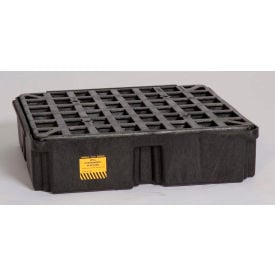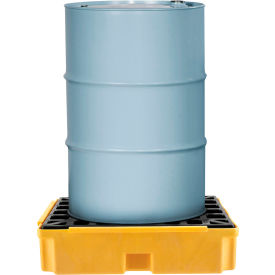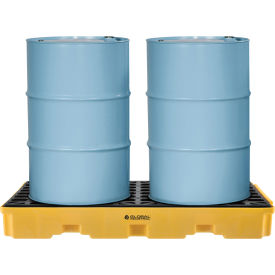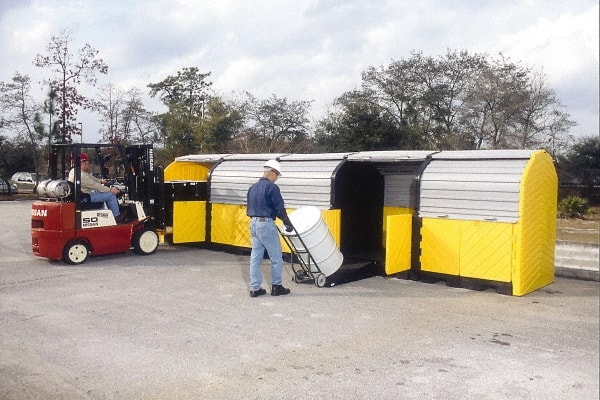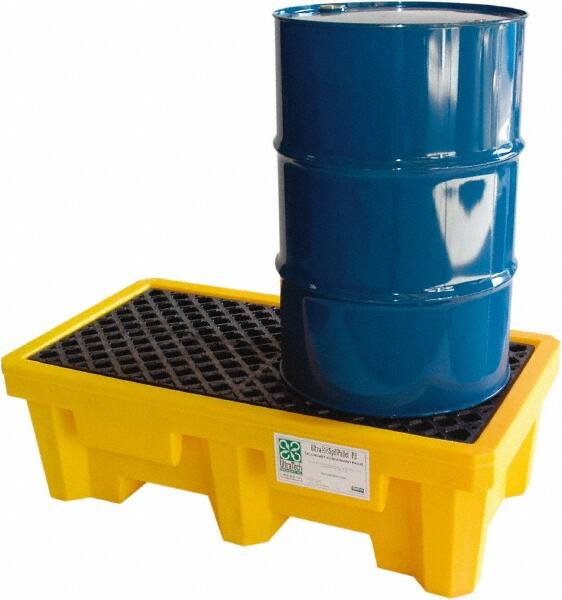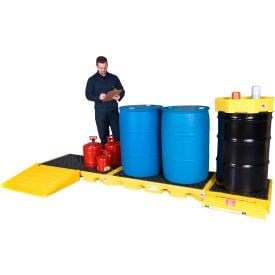Maximizing Industrial Safety and Efficiency: The Comprehensive Guide to Advanced Spill Containment Solutions
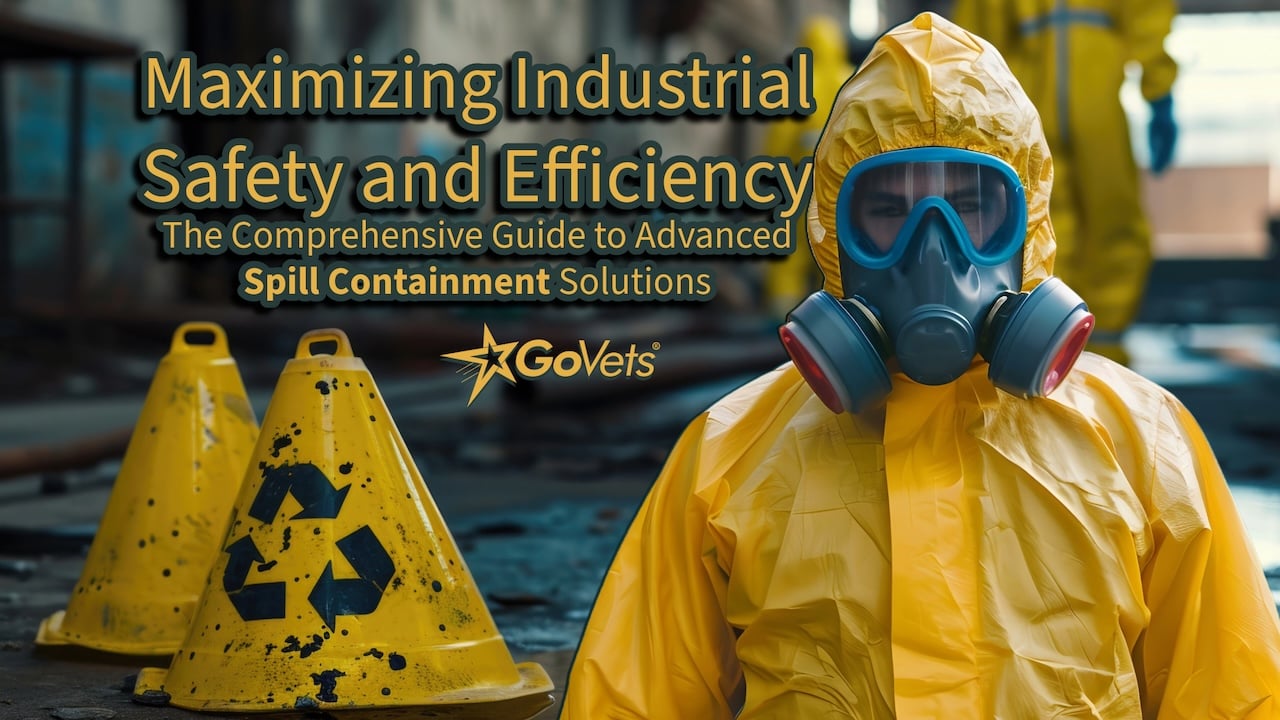
Introduction to Spill Containment
Spill containment is an essential practice in various industries, designed to prevent pollutants from contaminating the ground, waterways, and other natural resources. These systems are vital in managing spills of oils, chemicals, and other hazardous substances, especially in environments like manufacturing facilities, laboratories, and warehouses. Effective spill containment not only protects the environment but also ensures compliance with stringent regulatory standards and helps maintain workplace safety.
- Overview of Spill Containment Solutions
- Regulatory Compliance and Environmental Impact
- Case Studies and Success Stories
- Buyer's Guide to Spill Containment Products
1. Overview of Spill Containment Solutions
A. Platforms
Spill containment platforms are integral components designed to hold containers or drums, preventing any spillage from reaching the floor. These platforms are typically made from high-density polyethylene with resistance to chemicals and corrosion.
- Product Recommendation: Explore a variety of Spill Containment Platforms on GoVets to find the perfect fit for your needs.
B. Pallets
Spill containment pallets are designed to support heavy loads while containing spills. They are often equipped with grates for easy removal and cleaning.
- Product Recommendation: Shop for Spill Containment Pallets on GoVets to enhance your spill management system.
C. Ramps
Designed for ease of access, spill containment ramps facilitate the safe and efficient movement of drums and containers onto and off of spill containment platforms and pallets.
- Product Recommendation: View our selection of Spill Containment Ramps on GoVets.
2. Regulatory Compliance and Environmental Impact
In the realm of industrial operations, adhering to regulatory standards for environmental protection is both a legal requirement and a critical component of sustainable practice. Spill containment systems play a pivotal role in this arena, serving as a fundamental measure to mitigate the adverse effects of environmental pollution from chemical spills and other hazardous substances.
Under the jurisdiction of the Environmental Protection Agency (EPA), the Clean Water Act outlines specific requirements that facilities must follow to prevent pollutants from contaminating nearby waterways. These regulations dictate not only the presence of spill containment solutions but also establish stringent criteria for their capacity and effectiveness. Facilities found in violation of these standards face severe penalties, including hefty fines and potential operational shutdowns, emphasizing the importance of compliance.
Furthermore, state and local regulations may impose additional requirements, demanding that companies adopt a proactive approach to environmental management. These standards are designed to ensure that facilities are equipped with adequate spill containment systems that can handle potential spills without risk to the surrounding environment. Compliance with these regulations not only minimizes environmental impact but also protects public health and safety.
By implementing robust spill containment measures, companies demonstrate their commitment to environmental stewardship and corporate responsibility. Effective spill management not only supports compliance with federal and state regulations but also reduces potential liabilities associated with environmental cleanup and legal complications. More importantly, it enhances a company’s reputation as a responsible entity committed to protecting the ecosystem and contributing positively to community safety and health.
3. Case Studies and Success Stories
Spill containment systems are crucial for maintaining safety and environmental standards across various industries. This section features anonymized real-life scenarios where businesses have successfully implemented such systems, showcasing the challenges they faced and the innovative solutions they employed. These success stories highlight the effectiveness of GoVets products in preventing environmental damage and enhancing safety protocols.
Case Study 1: Chemical Manufacturing Facility
A large chemical manufacturing facility faced significant challenges with accidental spills during the transfer of chemicals between storage and processing units. The frequent spills not only posed environmental risks but also threatened employee safety and compliance with stringent environmental regulations. The facility implemented a series of high-capacity spill containment pallets and custom-designed platforms, sourced from GoVets, to capture and contain accidental discharges during the transfer process. The result was a dramatic reduction in uncontained spills, ensuring compliance with EPA guidelines and enhancing workplace safety.
Case Study 2: Automotive Repair Shop
An automotive repair shop dealing with large volumes of oils and lubricants struggled with managing minor spills, leading to slippery floors and potential fire hazards. The shop introduced modular spill containment trays for each workstation, allowing quick and efficient containment of any leaked substances. These trays were equipped with easy drainage features, facilitating the safe disposal of collected wastes. The implementation of these solutions not only improved the cleanliness of the work areas but also significantly reduced the risk of slips and fire, creating a safer working environment.
Case Study 3: Agricultural Cooperative
An agricultural cooperative needed a solution to manage the runoff from pesticide and fertilizer mix areas. The cooperative opted for a customized spill containment system that included berms and barriers designed to prevent any potential runoff from reaching nearby water sources. This system was tailored to handle the specific chemicals used, ensuring that they met local agricultural runoff regulations and protected the surrounding ecosystem.
Through these examples, it's evident that GoVets spill containment products not only meet regulatory requirements but also offer versatile and effective solutions tailored to the unique challenges faced by different industries. By choosing the right containment solutions, businesses can protect the environment, ensure the safety of their employees, and maintain compliance with relevant laws and standards.
4. Buyer's Guide to Spill Containment Products
5. Conclusion and Call to Action
Investing in high-quality spill containment solutions from GoVets not only ensures regulatory compliance and environmental protection but also enhances workplace safety. Encourage readers to take proactive steps by exploring GoVets' comprehensive range of spill containment products, where they can find reliable solutions tailored to their specific industrial needs.



